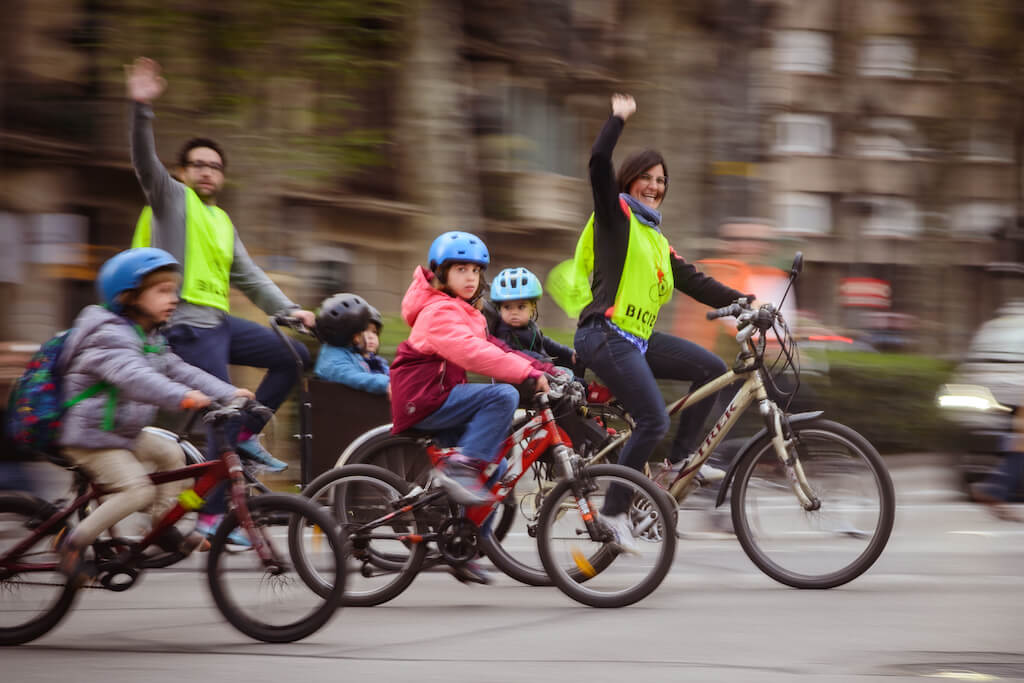Autumn Gear Guide
Find inspiration in our Gear Guide that will keep you out on your bike through wind or rain.
Download NowIn the ever-evolving landscape of sustainable transportation for children, the bike bus has emerged as a beacon of change, connecting communities and schools while promoting active and eco-friendly lifestyles. Originating in European cities like Barcelona, this trend has now become a global movement, reshaping the way kids commute to school. Let’s explore what bike buses […]
In the ever-evolving landscape of sustainable transportation for children, the bike bus has emerged as a beacon of change, connecting communities and schools while promoting active and eco-friendly lifestyles. Originating in European cities like Barcelona, this trend has now become a global movement, reshaping the way kids commute to school. Let’s explore what bike buses are, their origin, and why children worldwide have fallen in love with this innovative mode of transportation.
The roots of the bike bus movement can be traced back to 2020 in Spain when two teachers from El Petit Miguel school in Vic embarked on a mission to accompany nine children to school by bicycle. Navigating busy and polluted streets, the initiative faced a temporary setback due to the pandemic but experienced a resurgence in the fall of the same year. Responding to local demands for secure cycling infrastructure, the “BusBici” was born, marking the inception of the bike bus concept.
Since then, the movement has grown organically, with 40 bus lines launched in the Barcelona Metropolitan Area and 790 participants, a number steadily increasing each week. The success and popularity of the bike bus model have rippled across continents, capturing the imagination of educators, parents, and communities worldwide.
The bike bus movement has not only gained momentum in Europe but has also crossed the Atlantic, making waves in the United States. Inspired by the success of Barcelona’s bike bus model, Sam Balto, a physical education teacher in Portland, Oregon, initiated a similar project at Alameda Elementary. What started as a small project quickly evolved into a weekly event, uniting over 100 students every Wednesday in a two-wheeled parade to class.
Balto reflects on the widespread positive reaction, stating, “We’re creating that sense of community, and seeing the children thrive. I think people love a community coming together for the children.” This sentiment echoes the global appeal of the bike bus – a community-driven initiative with a focus on the well-being and happiness of children.
The bike bus movement has garnered attention on an international scale, leading to the first-ever international bike bus summit. Representatives from cities such as Glasgow, Cardiff, Worcester, Frankfurt, Vic, and Barcelona, along with researchers from esteemed institutions, converged to discuss and celebrate the bike bus phenomenon.
The summit resulted in the Barcelona Declaration on the Bicycle Bus, capturing the essence of the movement: “#BikeBus is joy and freedom. Community bike rides to school make kids happier, more awake, and ready to learn.” The declaration emphasizes the demand for child-friendly, healthy, and safer streets, reinforcing the commitment to prioritizing urban spaces for the well-being of children.

Sam Balto and company leading the bike bus (photo courtesy of Calvox & Preiche)
As the bike bus trend continues to gain traction, the focus shifts toward encouraging networking, expansion, and information sharing. Gareth Johnson from the Shawlands Bike Bus in Glasgow expressed a renewed determination to make change, grow the movement, and get more kids safely to school on their bikes.
Looking ahead, the bike bus movement symbolizes more than just an alternative mode of getting to school. It represents a commitment to resilient, adaptable communities and a sustainable and healthier future for the next generation. Bike bus programs globally showcase that environmental awareness, public health, and community-building can coexist harmoniously, setting the stage for a transformative shift in child transportation.
For those inspired by the bike bus movement and eager to implement positive change in their communities, here are practical steps to kickstart a bike bus initiative:
Starting a bike bus is a transformative initiative, akin to planting a seed that grows into something beautiful. It’s about fostering a love for biking among children, promoting a healthy lifestyle, and contributing to a future that values sustainability and community spirit. With each new bike bus, we move one pedal stroke closer to a brighter, healthier, and more connected future.
Final Thoughts
The bike bus movement is not just a passing trend; it’s a testament to the collective power of communities striving for positive change. As bike buses proliferate around the world, the narrative of passive commutes is being rewritten into one of active, engaging journeys. With each pedal stroke, we move closer to less congested streets, air quality improvements, and children who connect with their peers outside the classroom walls, creating a future that values sustainability, community spirit, and the joy of a shared ride.
Find inspiration in our Gear Guide that will keep you out on your bike through wind or rain.
Download Now
Leave a comment